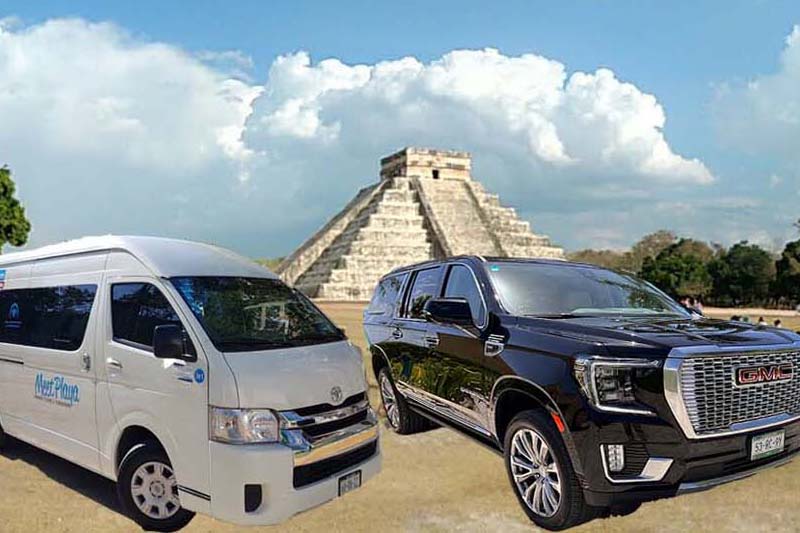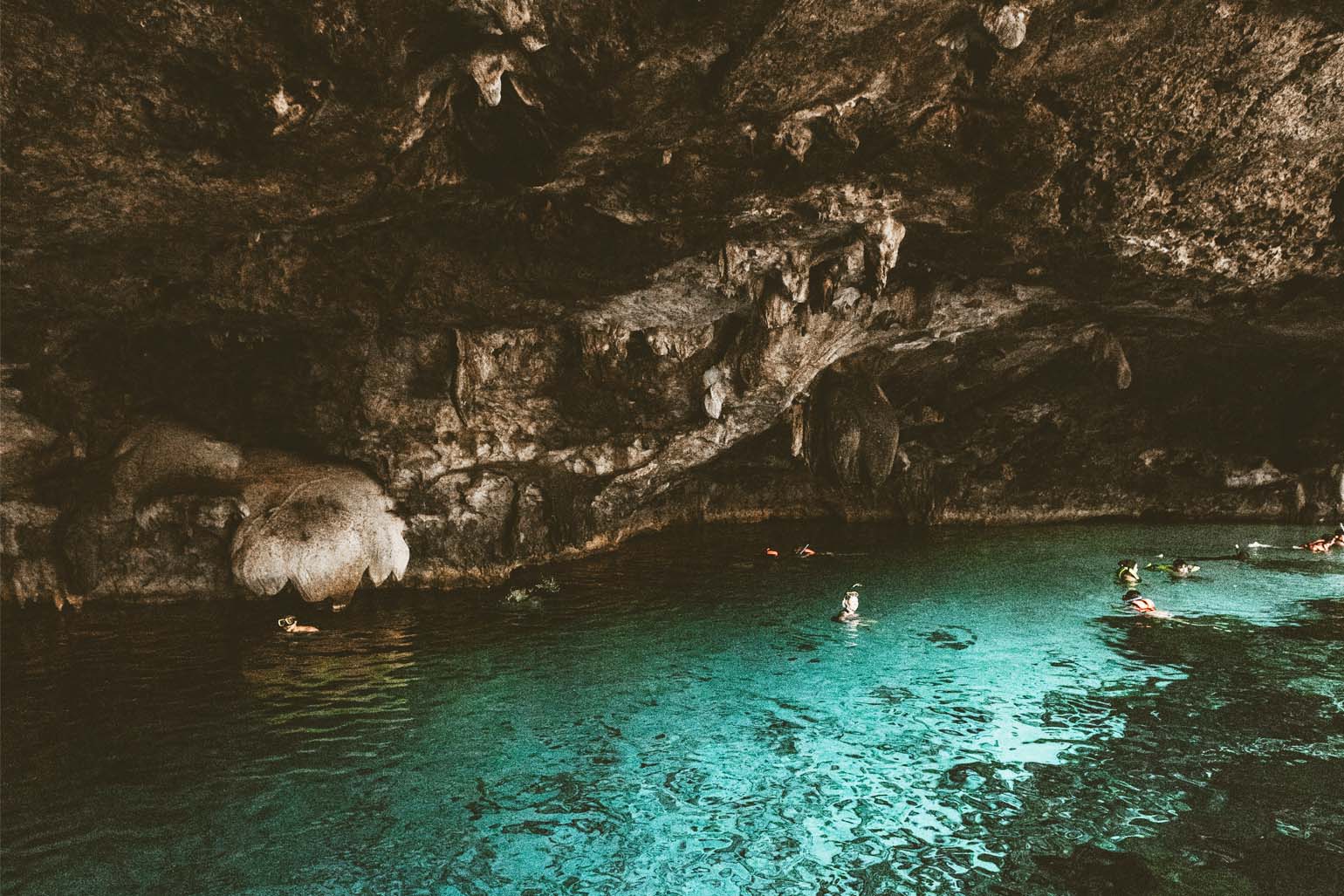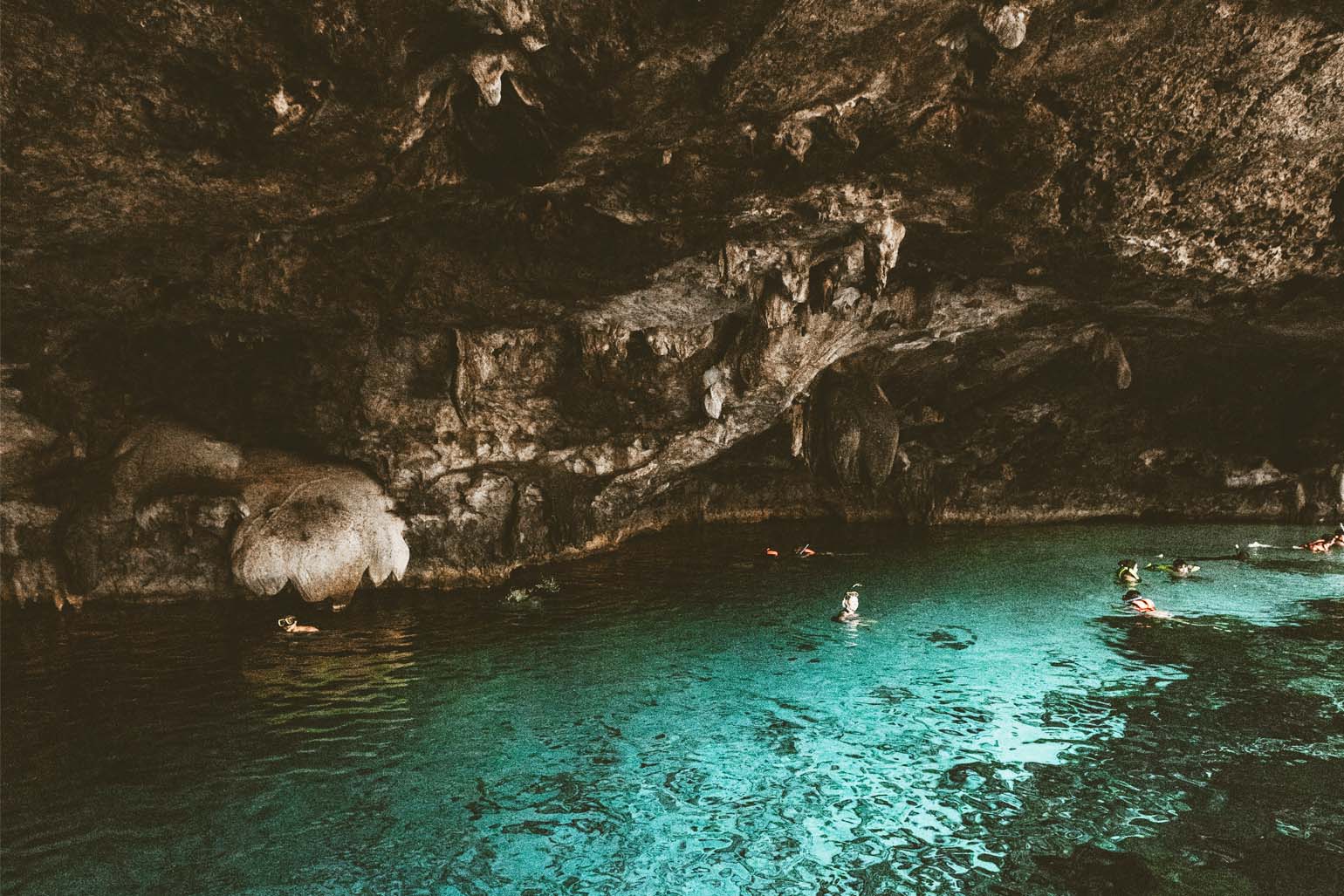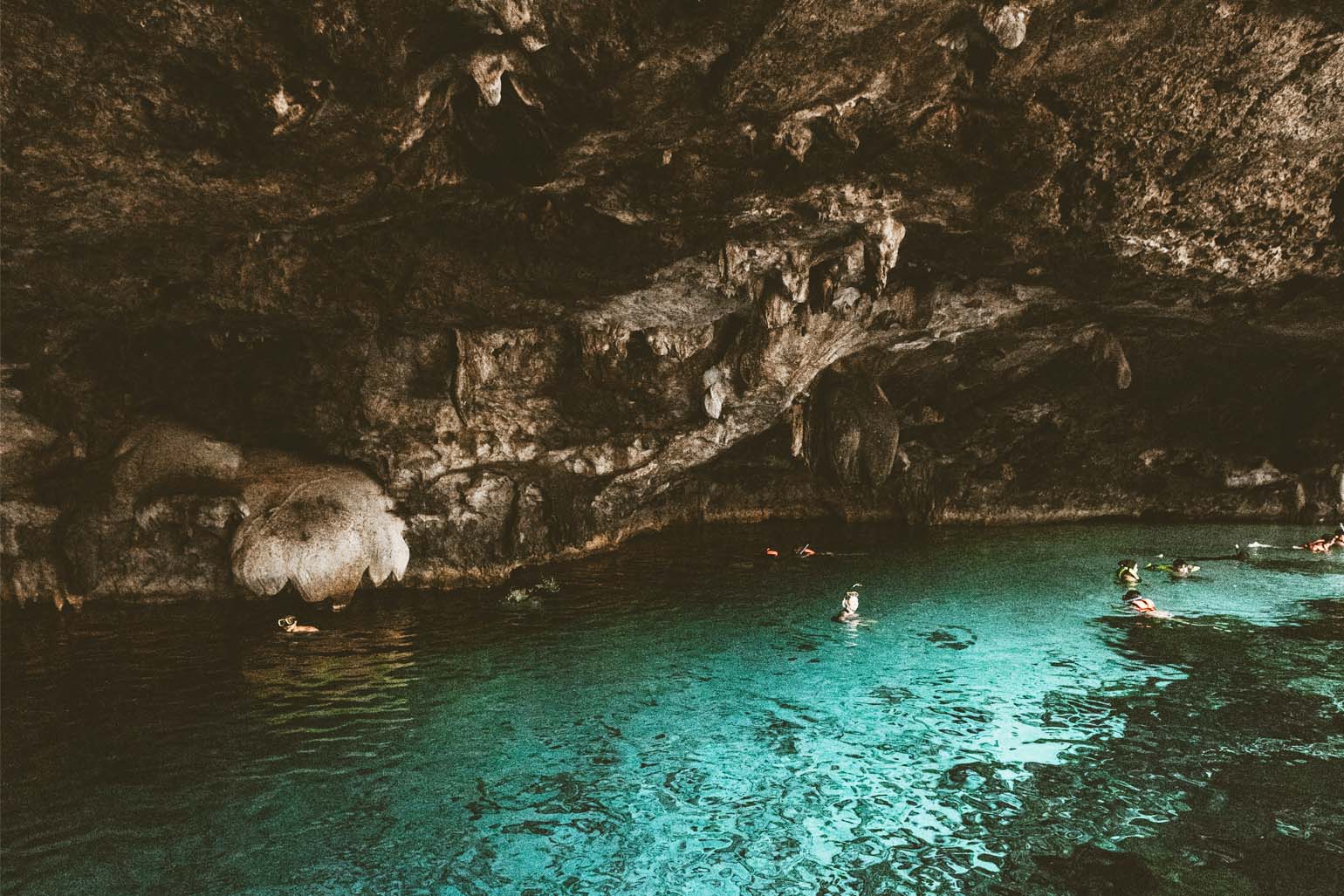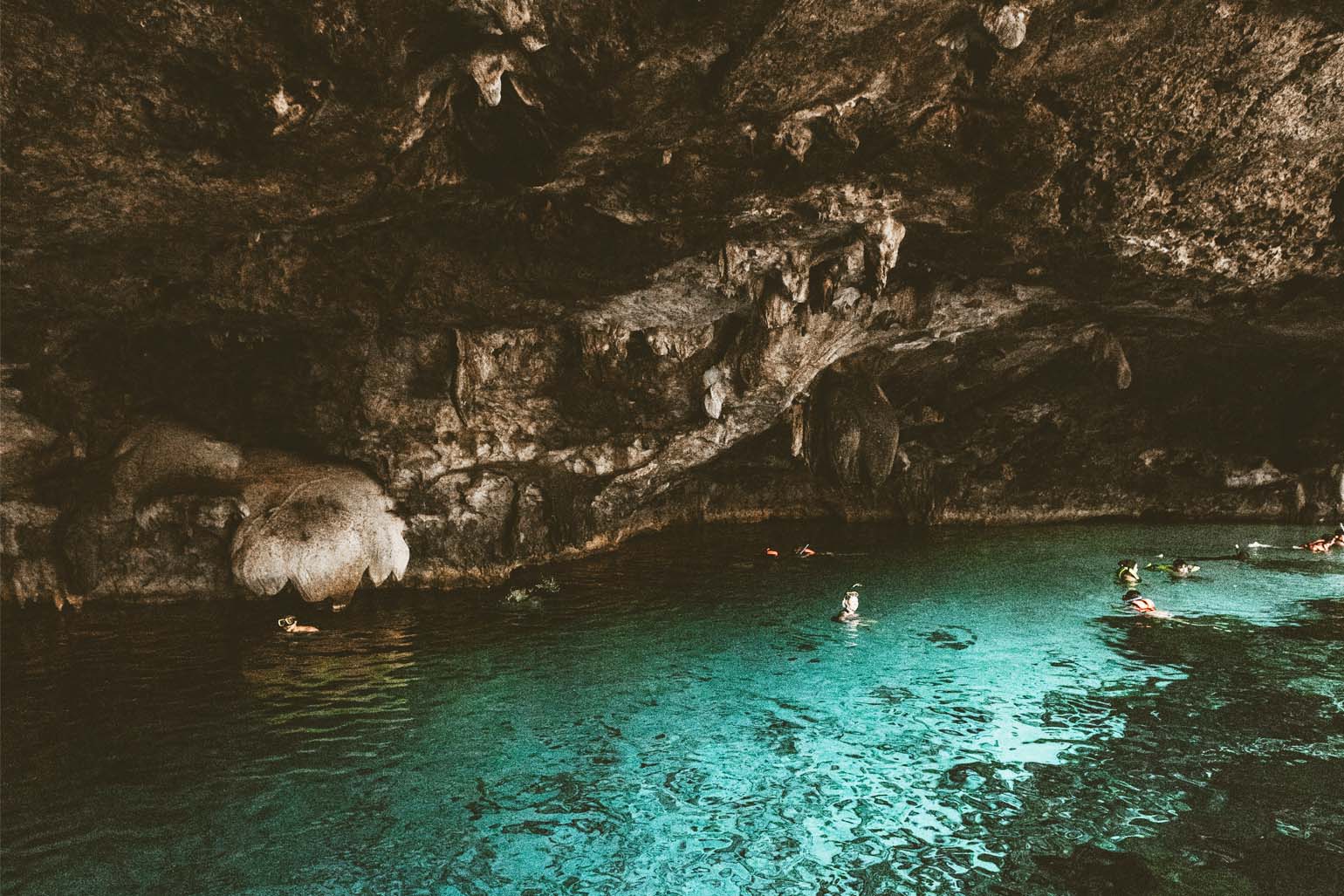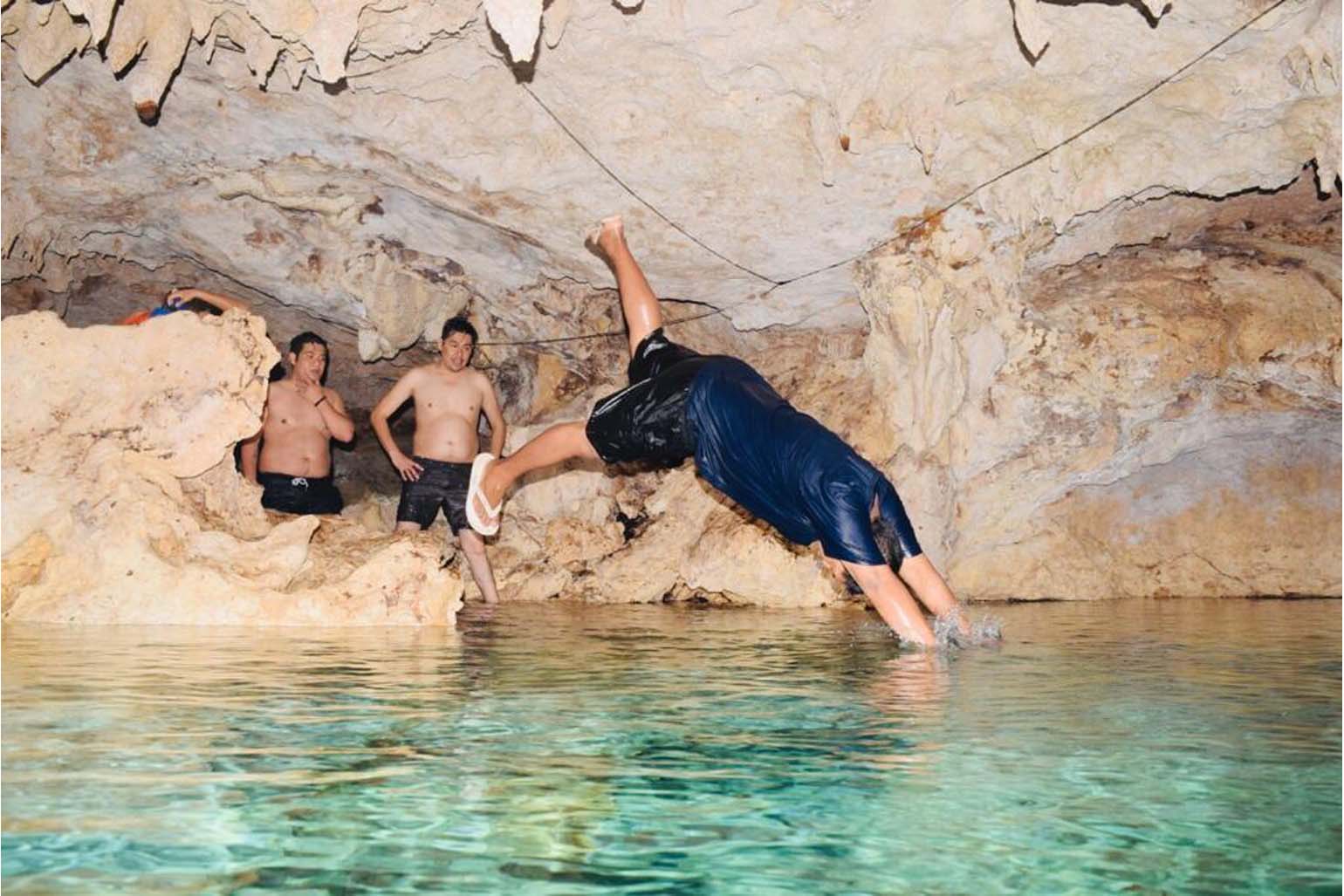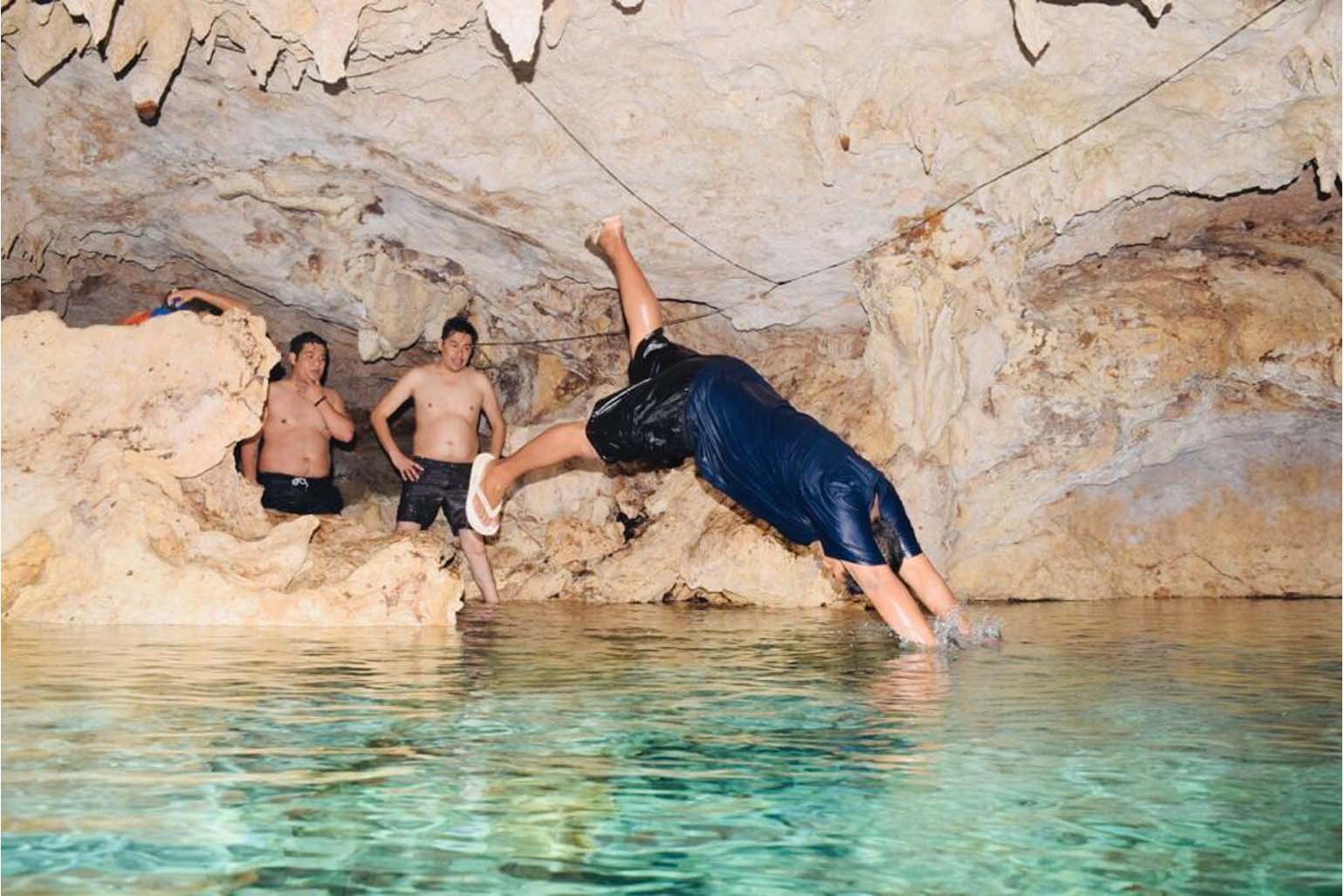Cenote Dos Ojos
Located about 20 kilometers from Tulum, within the Dos Ojos Park, Cenote Dos Ojos is one of the most visited cenotes in Quintana Roo, especially by diving enthusiasts. In reality, they are two large cenotes (hence the name) connected by an underwater passage of about 400 meters in length, with a maximum depth of 120 meters and a total extension of more than 80 kilometers.
Thanks to the number and varied difficulty of the different diving routes available, the Cenote Dos Ojos is ideal for beginners and expert divers.
In addition, due to the crystal clear water, it is also a perfect place for snorkeling or simply swimming.
Great Cenote of Tulum
The Gran Cenote, located on the outskirts of Tulum pueblo, is a semi-open cenote with turquoise waters, surrounded by jungle vegetation, perfect for swimming, snorkeling, and diving. It is distinguished among the other cenotes by the abundance of life. Here, you will swim among several species of fish and turtles. In addition, being semi-open, you can choose between enjoying the water in the open sky or the darkened depths of the cavern.
Cenote Chaak Tun
The Chaak Tun Cenote — rain of stones, in the Mayan language — is located on the outskirts of Playa del Carmen. In its waters, you can find a wide variety of fish, such as catfish or blind shrimp, and incredible rock formations, such as stalactites and stalagmites.
The Cenote comprises 3 caverns (two flooded and one dry): Pixan, Xibalbá, and Aluxes. The second, Xibalbá, is named after the underworld of Mayan mythology and was a sacred place of rituals and ceremonies in the splendor times of Mayan civilization. A relic of this is the ceremonial altar still at the entrance today.
On the other hand, in the depths of the first cavern, in Pixan, there is a sculpture in honor of the Virgin of Guadalupe.
Route of the Cenotes in Puerto Morelos
Puerto Morelos is a quiet fishing village located halfway between Cancun and Playa del Carmen, famous for its Route of the Cenotes: a route of about 35 kilometers, in which there are more than 60 open, semi-open, and closed cenotes connected, as well as ecological reserves, ecotourism, and adventure parks, and a large abundance of flora and fauna.
The main cenotes that are part of the Puerto Morelos Cenote Route are:
• The Cenote Las Mojarras (open) is the largest on the Route.
• The Cenote Boca del Puma consists of 3 cenotes (2 open and 1 closed) and has 7 zip lines, snorkeling dives, horses, bicycles, and ATV rides. Here, you can also practice climbing and rappelling.
• The Siete Bocas Cenote (semi-open) gets its name from the 7 entrances that connect it to the surface.
• The Zapote Cenote (open) is one of the best for diving since it has unique rock formations in the world in the shape of bells. In addition, it has a 10-meter-high platform from which you can jump (if you dare, of course).
• The Cenote La Noria (closed), the shallowest of the cenotes on the Route, is ideal for relaxing.
• The Cenote Kin Há (closed) is especially recommended for diving and kayaking, snorkeling, or swimming.
• The Cenote Verde Lucero (open) gets its name from the particular emerald hue of its waters.
Río Secreto
Yes, Rio Secreto is not a cenote. Still, we had to include it in this list because it is, without a doubt, one of the most extraordinary adventures you can experience in Riviera Maya: a Nature Reserve that consists of a complex system of underground galleries, partially flooded and connected.
It is, in other words, a surreal universe, full of strange rock formations and bizarre ecosystems inhabited by more than 100 species of animals.
One thing is clear: the nature of the Riviera Maya expands far beyond the paradisiacal beaches of the Caribbean Sea. Cenotes and underground rivers, hidden among the thick vegetation of the jungle, are the perfect settings for your next adventure.
That, of course, if you dare. What do you say? Let's go?


